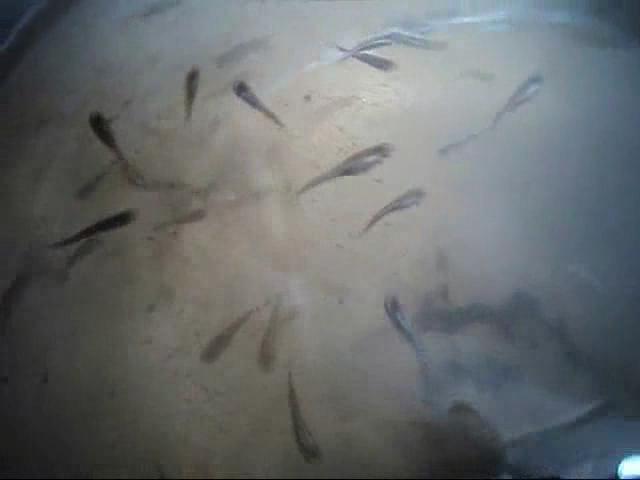
- •Р.А. Юсупова
- •От автора
- •Unit 1 aquaculture Active vocabulary
- •1 Aquaculture
- •1.1 Read the following international words and translate them. (Mind the part of speech).
- •1.2 Give Russian equivalents of the following words and word combinations.
- •1.3 Read and translate the text with the help of a dictionary.
- •1.4 Answer the questions
- •1.6 Translate the given Russian words into the English ones:
- •1.7 Match the words with their definitions.
- •1.8 Read the text without a dictionary. Aquaculture’s beginnings
- •2 Ancient and modern aquaculture
- •2.1 Read the following international words and translate them. (Mind the part of speech).
- •2.2 Give Russian equivalents of the following words and word combinations.
- •2.3 Read and translate the text with the help of a dictionary.
- •2.4 Give English equivalents:
- •Vocabulary
- •4.5 Give English equivalents:
- •4.6 Translate the given Russian words into the English ones:
- •4.7 Match the words with their definitions.
- •4.8 Topics for discussion
- •Feeding the world through agriculture
- •5 Control over reared species
- •5.1 Read the following international words and translate them. (Mind the part of speech).
- •5.2 Give Russian equivalents of the following words and word combinations.
- •5.3 Read and translate the text with the help of a dictionary.
- •5.4 Give English equivalents:
- •5.9 Answer the questions
- •Unit 2 fish culture Active vocabulary
- •6 The big two in fish culture
- •Choose the equivalents:
- •Aquaculture species in the united states
- •1 Rainbow, brown
- •7.4 Give English equivalents:
- •4Bullhead
- •7.13 Render the following verbs with ing-forms into infinitives and translate them:
- •8 Culture systems
- •8.1 Read the following international words and translate them.
- •8.2 Give Russian equivalents of the following words and word combinations.
- •8.3 Read and translate the text with the help of a dictionary.
- •8.4 Give English equivalents:
- •8.5 Match the words with their definitions.
- •8.6 Fill in the gaps using the words given below:
- •8.7 Answer the questions
- •8.8 Read the text without a dictionary. Types of aquaculture opeations
- •Vocabulary
- •8.9 Match the words with their definitions.
- •8.10 Answer the questions
- •Vocabulary
- •Vocabulary
- •10.5 Translate the given Russian words into the English ones:
- •Vocabulary
- •Vocabulary
- •Vocabulary
- •Vocabulary
- •12.5 Answer the questions
- •13 Potential adverse effects
- •13.1 Read and translate the text with the help of a dictionary.
- •Vocabulary
- •13.2 Answer the questions
- •14 Carp Aquaculture
- •Carp as ornamental fish
- •15 Tilapia Fish farming
- •Nutrition
- •Exotic species
- •Uses other than supplying food
- •In aquaria
- •16 Trout Anatomy
- •Habitat
- •As food
- •River fishing
- •17 Salmon Life cycle
- •Species
- •Atlantic Ocean species
- •Pacific Ocean species
- •Salmon fisheries
- •Salmon aquaculture
- •18 Shrimp Farming
- •Marketing
- •Life cycle
- •19 Grass carp
- •Ecology
- •Invasive species
- •Use as weed control
- •Fishing for grass carp
- •Triploid Grass Carp
- •20 Channel catfish
- •21 Pond
- •Technical definitions
- •Formation
- •Characteristics
- •22 Cage
- •Site Criteria
- •Pond Problems
- •Water Quality
- •Temperature
- •Turbidity
- •23 Raceway
- •Site selection
- •Water flow
- •Maximum load
- •Waste water
- •Appendix
- •Proverbs
- •Библиографический список
15 Tilapia Fish farming
T
Tilapia, young and mature, of Tamil
Nadu
Commercially grown tilapia are almost exclusively male. Cultivators use hormones, such as testosterone, to reverse the sex of newly spawned females. Because tilapia are prolific breeders, the presence of female tilapia results in rapidly increasing populations of small fish, rather than a stable population of harvest-size animals.
Other methods of tilapia population control are polyculture, with predators farmed alongside tilapia or hybridization with other species.
Whole tilapia fish can be processed into skinless, boneless fillets: the yield is from 30 percent to 37 percent, depending on fillet size and final trim. The use of tilapia in the commercial food industry has led to the virtual extinction of genetically pure bloodlines. Most wild tilapia today are hybrids of several species.
Nutrition
Tilapia have very low levels of mercury, as they are fast-growing and short-lived, with a primarily herbivorous diet, so do not accumulate mercury found in prey. Tilapia is a low saturated fat, low calorie, low carbohydrate and low sodium protein source. It is a source of phosphorus, niacin, selenium, vitamin B12 and potassium.
Farm-raised tilapia (the least expensive and most popular) has a high fat content, though low in saturated fats. According to research the nutritional value of farm-raised tilapia may be compromised by the amount of corn included in the feed. Short-chain omega-6s in corn accumulate in the fish. The ratio is worse than is found in beef. Widespread publicity encouraging people to eat more fish has seen tilapia being purchased by those with lower incomes who are trying to eat a well-balanced diet.
Exotic species
Tilapia are unable to survive in temperate climates because they require warm water. The pure strain of the blue tilapia, has the greatest cold tolerance and dies at 45 °F (7 °C) while all other species of tilapia will die at a range of 52 to 62 °F (11 to 17 °C). As a result, they cannot invade temperate habitats and disrupt native ecologies in temperate zones; however, they have spread widely beyond their points of introduction in many fresh and brackish tropical and subtropical habitats, often disrupting native species significantly. In the United States, tilapia are found in much of Florida, Texas and a few other isolated areas, such as power plant discharge zones. Many state fish and wildlife agencies in the United States, Australia, South Africa and elsewhere consider them an invasive species.
